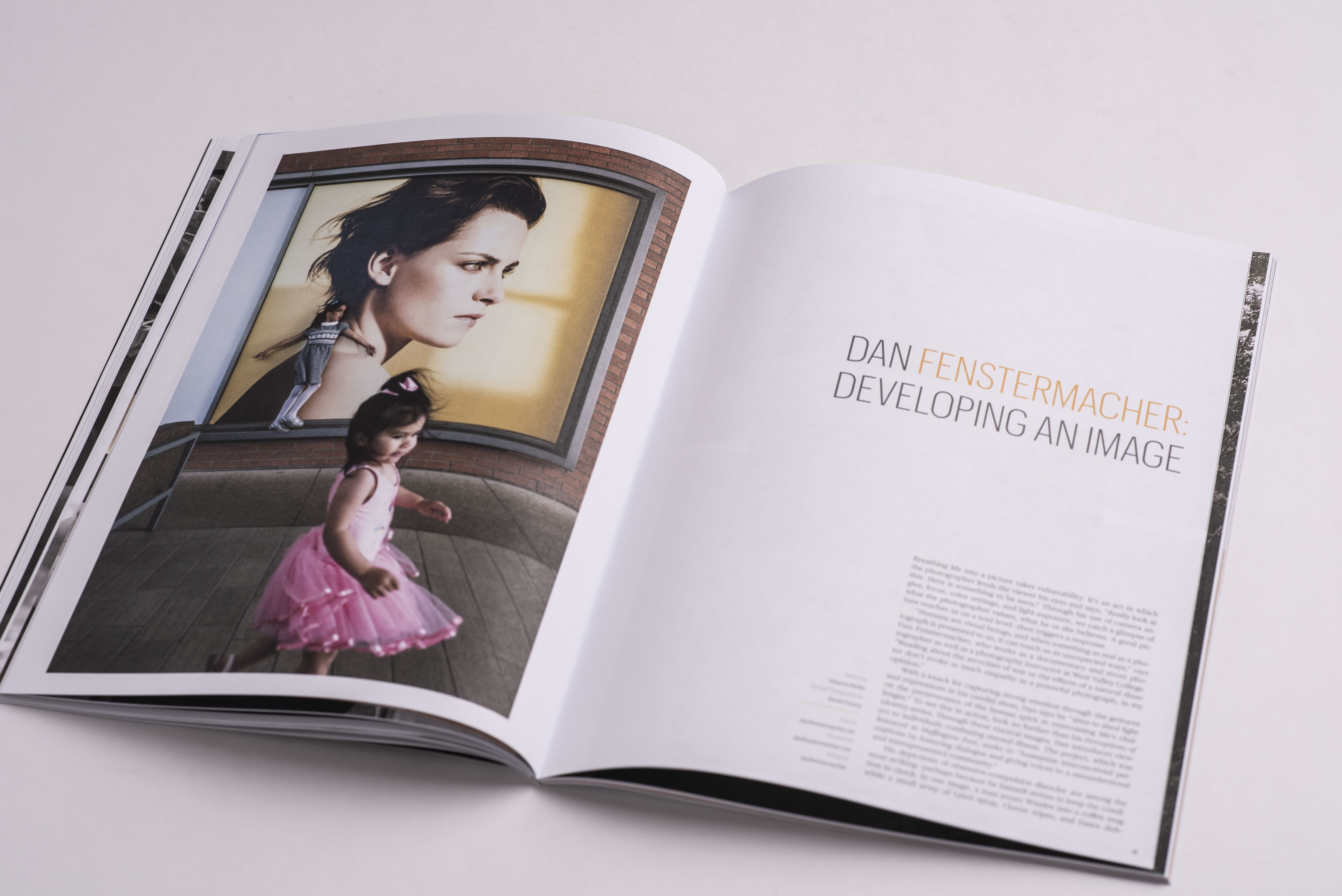Breathing life into a picture takes vulnerability. It’s an act in which the photographer lends the viewer his eyes and says, “Really look at this. Here is something to be seen.” Through his use of camera angles, focus, color settings, and light exposure, we catch a glimpse of what the photographer values, what he or she believes. A good picture reaches us on a soul level—then triggers a response.
“Humans are visual beings, and when something as real as a photograph is presented to us, it can touch us in unexpected ways,” says Dan Fenstermacher, who works as a documentary and street photographer as well as a photography instructor at West Valley College. “Reading about the atrocities of war or the effects of a natural disaster don’t evoke as much empathy as a powerful photograph, in my opinion.”

With a knack for capturing strong emotion through the gestures and expressions in his candid shots, Dan “aims to shed light on the perseverance of the human spirit in overcoming life’s challenges.” To see this in action, look no further than his Perceptions of Identity series. Through these visceral images, Dan introduces viewers to individuals combating mental illness. The project, which was featured in Huffington Post, seeks to “humanize misconceived perceptions by fostering dialogue and giving voices to a misunderstood and misrepresented community.”
His depictions of obsessive-compulsive disorder are among the most striking—perhaps because he himself strives to keep the condition in check. In one image, a man pours Windex into a coffee mug while a small army of Lysol spray, Clorox wipes, and Dawn dishwasher soap bottles crowd his coffee table. In another, a woman wearily washes up, seven bottles of hand sanitizer lining her Saran-wrapped sink counter—their nozzles swiveled (almost accusingly) in the direction of her hands.
Surprisingly, Dan discovered his inner shutterbug later on. Although he received a tiny polaroid that captured thumbnail-sized photos as a kid, he didn’t obtain his first serious camera until his undergrad years. And even then, he was planning a career in marketing. “I’m gonna get into advertising and make these really funny Doritos commercials for the Super Bowl. It’s gonna be creative and fun,” Dan says, recalling his naive younger mindset during an interview with photography podcast StreetPX. On realizing marketing was a lot of paperwork and “Excel spreadsheets as far as the eye could see,” he determined to apply his El Camino College photography classes as a fine arts instructor at Xiangfan University in China. Dan has worked with cameras ever since, securing snapshots of life across four continents.
“We are all connected. Life is about helping others and, in return, receiving help as well.”
For one of his international projects, Dan flew to New Delhi, India, to recognize rickshaw drivers. “Yellow and green three-wheeled 150cc engine rickshaws of Delhi swarm the city like locusts and engulf its alleyways and streets,” he writes alongside the portraits. “Decorated to the individual driver’s taste, the rickshaws take on a home-like environment for the drivers and represent the lifeblood of India’s public transportation.” Delightfully dissimilar to New York taxis, these dented, scraped rigs are often outfitted with orange flowers and chili peppers to ward off evil spirits, with pictures of Hindu deities on the dashboard for added protection.
Another project drew him to a nursing home in Costa Rica to take senior portraits. There, he contemplated the cycle of life and our return to dependency, highlighted the importance of elders to society, and strove to catch the essence of each senior. “We are all connected,” Dan explains. “Life is about helping others and, in return, receiving help as well.” He fondly recalls the residents traveling by van to witness their portraits at a local art museum.
Closer to home, Dan documents parades, festivals, and other events around the Bay Area. His picture of a local wrestler backflipping off the ropes to defeat a prone opponent won the American Experience category of the 15th Smithsonian Photo Contest.
Even when he’s giving his camera a chance to breathe, Dan is talking photography with his students at West Valley. “I like seeing the progress of students at the end of the semester compared to where they started in week one,” he observes. “When a student feels excitement or pride about their work, I also feel and share that energy.” It seems teaching, like photography, is an exercise in empathy.
Dan Fenstermacher: Fine Art
Dan Fenstermacher: Commercial
Facebook: danfenstermacherphotography
Instagram: danfenstermacher
Twitter: dlfenstermacher
This article originally appeared in Issue 11.2 “Device”


